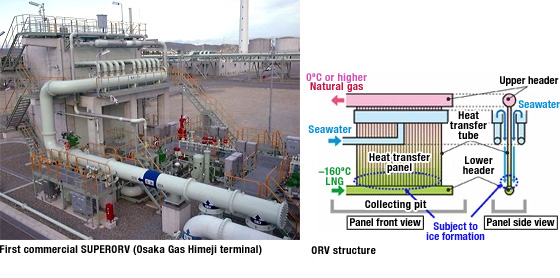Hida:
The author carefully explains that for mechanical refrigeration systems where a hydrocarbon is the refrigerant employed, care should be taken when subjecting the vaporizer and the suction of the compressor to a VACUUM condition in order to achieve the low temperature desired in the vaporizer. This is explained in detail, stating that such a condition could allow for the seepage of atmospheric air into the vacuum system and cause a mixture of hydrocarbons and oxygen within the refrigerant system – which would be hazardous. THAT is why the author gives the recommendations and not for preventing cryogenic leakage.
You don’t have to select top-entry type of cryogenic valves in an LNG facility, but it would be a wise move in my opinion. The price difference in the valves when one considers the total investment of an LNG facility (in the Billions of $) is miniscule.
If the refrigeration vaporizer is under positive pressure and not under vacuum, the concerns shifts to one of leaks and spillage. I would still opt for a totally welded system. You will find that a cryogenic process is subjected to a lot stresses and forces during startup and shutdowns/warmups/defrosting operations. Welded construction removes all those concerns. Besides, how can you – as a knowledgeable engineer knowing full well that the fluid in question is SUPER clean and pure (due to the need of liquefaction) – justify the need for flanges or “break-out” points in the piping?? You certainly have no reasonable need to inspect the piping and equipment for fouling or plugging. By the time the natural gas reaches the cold box it is probably one of the most cleaned-up and pure fluids in any process. Otherwise, it would not be allowed to enter a multi-billion dollar process to be liquefied. The majority of design principles employed in an LNG process are those of practical horse sense: the magnitude of the capital investment and the amount of continuous, steady operation required of the process makes it imperative that all the fluid entering the liquefaction (refrigeration) section be of the utmost cleanliness, purity, and steady process conditions. LNG facilities are not designed with routine monthly (or yearly, sometimes) maintenance or “turn-arounds”. By nature, all LNG projects are almost always undertaken under the concept of PROJECT FINANCING. This means that all the billions of monies borrowed to build the installation have to be paid by the generation of profits from the operation – and this, of course, means that any stoppage (for whatever reason) cannot be tolerated. All design is scrutinized to make sure that no stoppages, interruptions, or breakdowns occur during the life of an LNG facitility.
I have never seen LNG seawater vaporizers. Where did you see these? Or is the drawing just someone’s idea of a design? I can see the usual problems of freeze ups and corrosion when using seawater as the heat sink, and perhaps gravity drainage is why the vaporizers are shown tilted or slanted.

 FB
FB














